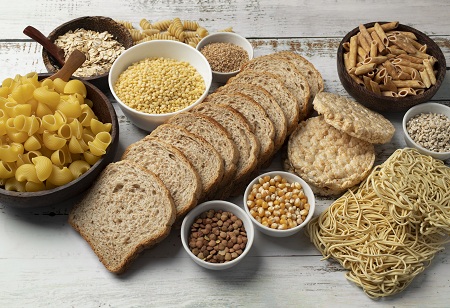
The Indian gluten-free food and beverage market is estimated to be USD 19.53 billion in 2024. It is expected to reach USD 37.48 billion by 2029, growing at a CAGR of 13.93% during the forecast period (2024-2029). As more people become health-conscious, there has been an increased awareness of dietary preferences and restrictions. Some individuals follow a gluten-free diet due to celiac disease, gluten sensitivity, or a perceived improvement in overall well-being.
The main impacts are on each value chain, including the uncertainty of customer demands on the sector's personnel, supply of raw materials, marketing and logistics, food services areas, production, and distribution. However, consumers with celiac disease or gluten intolerance are more likely to purchase gluten free products than gluten-intolerant products. Therefore, non-toxic products are expected to grow continuously during the forecast period.
Companies aim to expand the production of non reservoir items. India is the second-fastest-growing market for gluten free food and drinks in Asia, falling just behind China. Bakery items take up the dominant share of this market. This includes gluten. Let’s explore the exciting developments in the gluten free landscape.
“Improvement in the standard of living also contributes to the growth of the food industry. Several malls, hypermarkets, and markets across the country provide pleasure in shopping and, in turn, contribute to the growth in the food industry. Online shopping also contributes to the further growth of food and food-based industries,” says P.K. Natarajan, Founder & CEO, Shree Chakra Foods and Flavours.
Gluten-free cuisine has significantly impacted a booming range of diverse products. It brings fresh solutions for those following specific diets. This change isn't simply replacing gluten ingredients. It's a creative redoing of old favorites and creating brand new goods.
An excellent illustration of this is the boom of gluten free baking alternatives. Regular wheat flour has been swapped with various options, like almond flour, coconut flour, or chickpea flour. Bob's Red Mill, known for gluten-free products, provides a wide selection of gluten-free options. Now, people can bake everything from bread to cookies without giving up taste or texture.
Moreover, snack makers are diving headfirst into the gluten free trend. Names like Snack Factory now offer gluten free pretzel crisps. These crisps give those with gluten intolerance a fun and fulfilling snack. Now, you see lots more food types promoting gluten-free choices. This shows dedication to serving everyone and bettering health results for buyers.
“Companies dedicated to environmental sustainability with complete eco-friendly product lines lack accessibility to customers. The increasing influence of e-commerce in the Indian market simplifies the scope for these organizations to reach the end clients, subsequently creating awareness of the need to contribute towards a sustainable future,” says AbilashVijayan, CTO, and DiaGun Ventures.
Knowing more about issues with gluten, customers have changed their eating habits. Big food brands have seen this. They realize they have to work with all kinds of eaters. So, many essential food businesses now offer gluten-free items. This is a critical change in the world of gluten-free eating.
For example, Domino's Pizza is a strong case in point. Picking up on the gluten-free trend, Domino's launched a gluten-free crust. It's made with rice flour, rice starch, and potato starch. This clever move expanded Domino's customer reach. But it did more than that. It paved the way for big pizza chains to do the same. This step to cater to gluten-conscious customers shows something. It offers a new strategic focus in the industry. It shows an eager goal to keep up with the changing needs of customers.
Big-name cereal companies, such as General Mills, also make gluten-free products. They introduced gluten-free Cheerios made from oats without gluten. This shows they aim to meet different dietary needs, even for those sensitive to gluten. Having gluten-free alternatives from famous brands helps make gluten-free life more regular. It lessens the negative view of eating diets with restrictions.
Beyond catering to specific dietary needs, the gluten-free food market revolution has intertwined with the broader health and wellness movement. Consumers are increasingly associating gluten-free choices with a healthier lifestyle, prompting manufacturers to prioritize clean and nutritious ingredients in their gluten free offerings.
Quinoa, a nutrient-dense ancient grain, has become a staple in gluten-free diets due to its high protein content and complete amino acid profile. Brands like Ancient Harvest have capitalized on the popularity of quinoa, offering gluten-free pasta alternatives that meet dietary restrictions and provide a healthful alternative to traditional wheat-based pasta.
In addition, health-oriented food box services like Blue Apron and Hello Fresh now include gluten-free choices. This shows how gluten-free lifestyles are becoming part of regular healthy eating habits. These services give tasty gluten-free recipe options, making it easier for people to have a diverse, balanced diet without giving up on flavor or nutrition.
Gluten-free food has sparked a significant shift. It mixes new products, major brands, and health focus. As more people want gluten-free, the industry has plenty of choices that meet diet needs and also push for healthier eating overall. Top brands are making gluten-free even better. Now, shoppers can find many excellent and healthy choices without losing flavor or feel. Gluten-free is more than a fad; it's a significant change to food as a whole, widening its scope, focusing on health, and meeting varied customer needs.
We use cookies to ensure you get the best experience on our website. Read more...